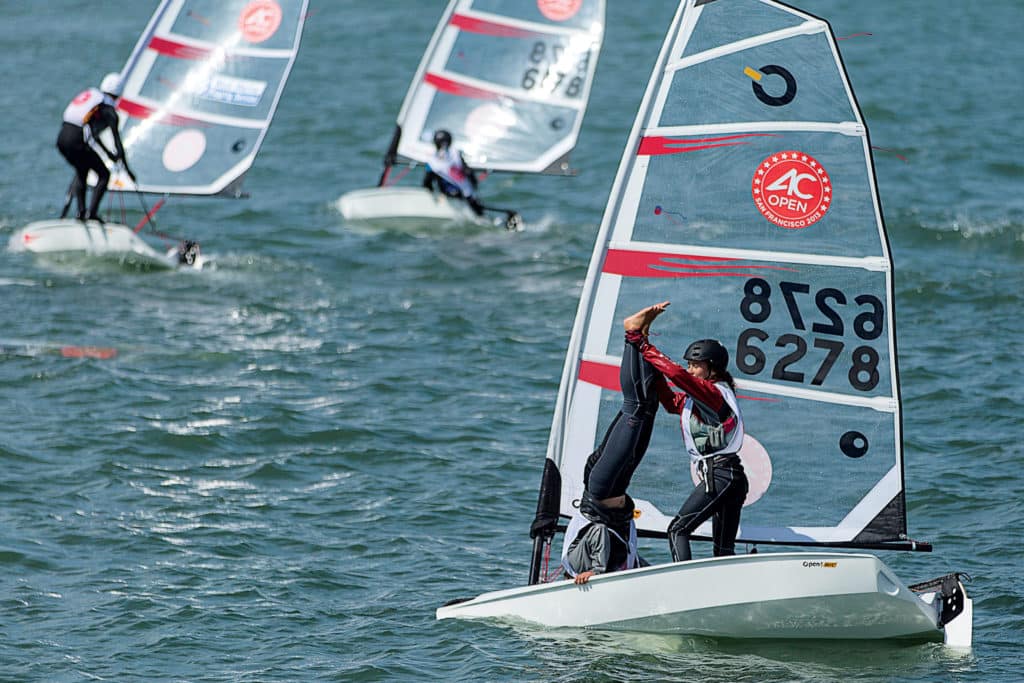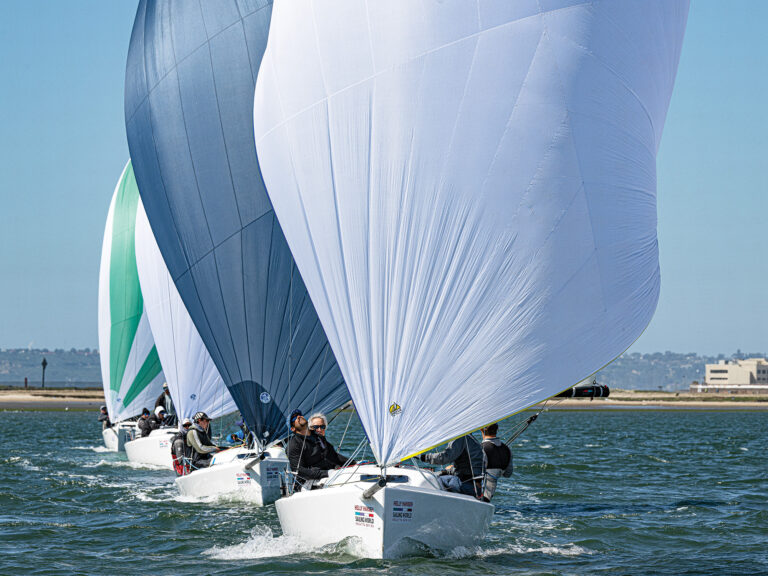The grade school my kids went to was small, and the parents were highly active and engaged. When they were kindergartners, I was unsure how to get involved, but parents with older students eventually showed me the way. As my children passed through the school I became more involved. Each year, new parents came in and older parents moved on, but it was the collective community that helped the school operate. Our sport operates the same way. New people trickle in and older folks move on, and it’s the contributions of these people that allow the sport to exist.
School and sailing are fundamentally the same: both existed before you and I came along, and both will carry on when we’re gone. So during the time we enjoy them, we also need to preserve and improve them. I have a few thoughts on how we can do this.
Bust the bubble. Youth sailing programs are phenomenal today. Anecdotal evidence suggests more kids are sailing than ever before. This is largely accomplished by narrowing the focus to youth boats and age-based sailing. A lot of equipment is provided, and most activities are hyper organized. This trend has helped make sailing easy to remain involved, but I think—for the good of our sailing future—we need to bust the bubble and give kids a taste of something else.
New organic experiences are critical for kids to remain connected to sailing. Whatever type of sailing you do, find an opportunity to expose it to a young sailor. Keelboats, catamarans, one-design classes new and old: anything goes. Open their eyes to a life outside the junior program bubble. Weeknight racing is low key, and it provides the type of unstructured outing that offers fun and adventure, so lets make sure they’re part of our summer twilight action.
Encourage kids to mess with boats. Rig a spinnaker on an Optimist. Send them halyard swinging on a keelboat. Introduce them to windsurfing. Let them sail to a distant beach or destination. Let them deliver their boat to a regional regatta, under its own bottom. Minimize competition and maximize curiosity. When it comes to kids, we like to measure progress, but let’s stop measuring, and simply let them roam.
Sailing won’t grow without its next generation. If teens and 20-year-olds don’t make connections, they will drift away. Use this summer to show them what they can do when they graduate from the youth sailing schedule. Don’t lose them to other sports.
Give more than take. Answer this honestly: Are you a giver or a taker? Our sport needs both in order to function, and each of us must be both. If we are only takers, we must consider the impact of our actions. When we are racing in a regatta, most of us are takers. Somebody else organized it, somebody else is running the races, and somebody else is scoring it and hosting the party. We are takers, and all those who make it happen are givers. We can’t be givers by simply writing a check. We must physically be part of it.
We race because we are competitive, but races don’t happen by themselves. A volunteer army sacrifices their personal time to make them happen. Some people take great pride and joy in helping with regattas; it’s their recreation. If racers don’t contribute on some level, however, the balance of nature will be negatively impacted. Volunteer burnout occurs when givers give too much and takers take too much.
Our sport is a community of people who enjoy sailing. When we’re givers we really connect with this community. When racing and taking we’re connected to our boat and our crew, and to those we’re racing against. The connection, however, is distracted by competition, and by how well we handle the emotions of competition. Giving is pure, however, and provides the chance to form deeper connections.
Those who struggle most with giving are the sport’s top racers. Their focus and time is committed to racing and consuming. For these sailors it’s hard to sacrifice a race weekend, or be distracted during an event to volunteer in some way, but there are still ways to contribute.
By virtue of their success, top racers are admired, so it’s easy to give back by sharing and socializing. Hang out at the bar, help on the dock, be friendly and strike up a conversation with someone other than your closest teammates. Go ahead and win the race and the party every once in a while. The top racer that focuses only on their racing, and doesn’t hang out, is a full-blown taker who adversely affects the balance and hurts the sport.
Serve every customer. Trophy winners largely direct our sport. We schedule the races they want and we form the rules around their preferences. The trophy winners are passionate about racing, and love the reward of winning. Their reward of a trophy and the adulation of the fleet motivate them to spend more money and invest more time. They are opinionated, and the rest of us listen to them. We admire their success and see them as leaders.
But what motivates everyone else? If the sole role for others is to pay the entry fee so the trophy winners get their reward, we’re in trouble because racing needs to be rewarding for everyone, and it needs to be fun. This is supposed to be recreation. We must find out how to serve every customer.
Consider the balance of sailing to socializing. Not everyone wants a full day on the water. There is a point at which fun becomes agony. The top guys might want a four-race day, but if most everyone else can’t physically handle it, they will eventually be turned away. One of my dreadful regatta memories was when I won the Snipe U.S. Nationals. I still remember walking by the yacht club bar near the end of the regatta, realizing I had yet to step foot inside the place. The days on the water were too long; there was no time or energy to hang out. This was how I was using my coveted free time. Even championships must have a balance, because if we don’t find that balance the downward spiral will begin.
Let’s all “get our head out of the boat,” as we say, and look around. Our sport is relying on it.










